What is a Heater For 3D Printer A Quick Guide
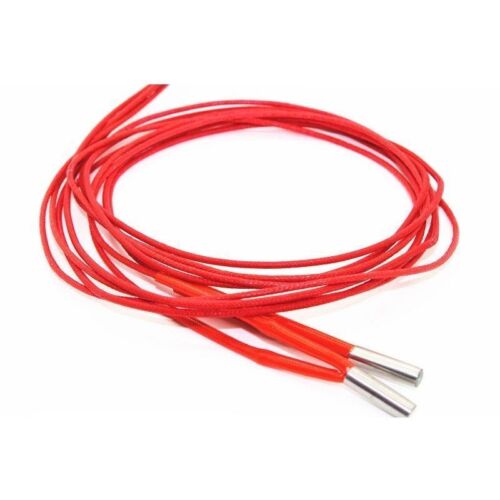
Precision printing depends on consistent temperatures. Without a reliable heat source, even the most advanced 3D printers fail to produce quality results. That’s where a cartridge heater for 3D printer comes in, a core component behind accurate, high-quality filament extrusion. Most users don’t realize how critical this small device is to maintaining performance and preventing failures. Whether you’re using PLA or high-temperature materials like ABS or Nylon, the heater ensures optimal flow through the hotend. Here’s everything you need to know to choose the right one, avoid underperformance, and extend your printer’s life. What is a Cartridge Heater for 3D Printer? A cartridge heater for 3D printer is a compact heating element embedded in the hotend. It heats the nozzle to the precise temperature needed to melt thermoplastic filament. Unlike open coil heaters, cartridge heaters offer better insulation, faster heating times, and focused thermal transfer. These heaters are cylindrical, stainless steel-clad components filled with magnesium oxide insulation and resistance wire. They are designed to withstand continuous high temperatures and fit snugly into the hotend block. Their tight fit ensures maximum heat transfer. Why It Matters in 3D Printing Temperature fluctuation causes weak prints, clogged nozzles, and inconsistent layer adhesion. A properly functioning cartridge heater for 3D printer prevents: Under-extrusion, which results from a heater not reaching or maintaining set temperature. Thermal runaway which can damage your printer or even pose safety risks. Material incompatibility, especially with high-temp filaments like PC or Nylon. Without stable heat control, even calibrated printers will struggle with warping and layer delamination. Key Features to Look For Not all cartridge heaters are equal. Selecting the right one means better performance and longer lifespan. Here are essential factors to consider: Wattage: Standard printers work well with 30W or 40W heaters. However, for high-temp filaments, a 50W heater may be required. Higher wattage provides faster heat-up times and better temperature stability. Voltage: Match the heater’s voltage rating to your printer’s power supply—typically 12V or 24V. A mismatch can cause power issues or failure to reach temperature. Diameter and Length: Most hotends require a 6mm diameter heater, with lengths varying between 20mm and 30mm. Confirm compatibility with your hotend block before purchasing. Leads: Look for high-temperature silicone or fiberglass-insulated wires. Poor insulation leads to short circuits or wire degradation. Sensor compatibility: Some heaters come bundled with thermistors or are designed to work closely with specific temperature sensors. This ensures accurate heat regulation. When to Replace Your Cartridge Heater Over time, heaters degrade. Resistance wires oxidize, insulation wears, and heating becomes unreliable. Common signs you need a replacement include: Slow heat-up times Failure to reach or hold the target temperature Repeated thermal errors during prints Visible wear on wires or casing If your print quality suddenly drops or your printer frequently throws errors, don’t overlook the heater. Replacing it early prevents damage to the hotend or mainboard. Best Practices for Installation Improper installation can reduce efficiency or cause heater failure. Follow these guidelines: Clean the hotend block before inserting the heater. Any debris can reduce thermal contact. Apply thermal paste (if recommended) for improved heat transfer. Secure the heater firmly with a grub screw or clamp, ensuring it doesn’t slide during operation. Avoid bending heater wires sharply near the metal casing. This weakens the internal connection. Perform a PID tune after installing a new heater to optimize temperature control. Which Materials Require Stronger Heaters? Different filaments need different temperatures: PLA: 180°C to 210°C – standard heaters suffice. ABS: 230°C to 250°C – benefit from stable heat, especially with enclosed printers. PETG: 230°C to 250°C – requires consistent heating for smooth extrusion. Nylon, Polycarbonate, PEI: 260°C to 300°C – demand a high-watt cartridge heater for 3D printer with robust insulation. Printing exotic materials? Invest in an all-metal hotend and a 50W or 60W cartridge heater to handle extreme temps without failure. Final Thoughts The cartridge heater for 3D printer may seem small, but its impact is massive. A high-quality heater ensures consistent extrusion, reliable temperature control, and better print finishes. It also protects your investment by preventing hotend damage and thermal errors. Whether you’re replacing a worn-out unit or upgrading for high-performance printing, choosing the right heater is essential for dependable results. Always verify compatibility and never compromise on build quality.
What is Band Heater With Thermocouple

Industrial heating demands precision. Whether it’s plastic injection molding or extrusion, maintaining the correct temperature is critical. That’s where a band heater with thermocouple steps in, delivering both heat and accurate temperature monitoring in one solution. Manufacturers face tight tolerances. A few degrees off can ruin an entire production batch. The integration of a thermocouple into the band heater ensures consistent thermal control, directly where it’s needed most. Understanding the Band Heater A band heater is a cylindrical heating element. It’s typically clamped around pipes, barrels, or nozzles. It’s used to heat metal surfaces directly, offering fast and even thermal distribution. Most are made of stainless steel and nickel-chromium resistance wire. These heaters are often seen in: Plastic processing equipment Pharmaceutical manufacturing Chemical reactors Food production machinery The band heater wraps tightly around the component, minimizing heat loss and enhancing efficiency. The Thermocouple Advantage A thermocouple is a sensor that measures temperature based on the voltage difference between two dissimilar metals. It converts heat into an electrical signal, feeding real-time data to controllers or monitoring systems. When embedded into a band heater, it enables: Accurate, real-time temperature readings Faster feedback for thermal control systems Reduced risk of overheating Longer heater lifespan due to better regulation This combination eliminates the guesswork. It’s not just heating; it’s intelligent heating. Types of Band Heaters With Thermocouples The design and material choice depend on the application. Here are the most common options: Mica Band Heaters: Cost-effective and offer up to 900°F operating temperatures. Ideal for general-purpose heating. Ceramic Band Heaters: Handle up to 1,400°F. Provide superior heat retention and energy efficiency. Mineral-Insulated Band Heaters: Compact, high-watt density, and extremely durable. Preferred for space-constrained setups. Thermocouple types often used: Type J: Iron-Constantan. Effective from 0°C to 750°C. Affordable and accurate for lower temperature ranges. Type K: Chromel-Alumel. Suitable up to 1,260°C. Common in industrial environments. Type E and Type T: Used in niche applications for specific temperature sensitivities. Why Industries Prefer Band Heater With Thermocouple The rise in automation and real-time monitoring has made traditional heaters obsolete in many contexts. A band heater with thermocouple delivers measurable advantages: Precise thermal control: Ensures consistent output quality Energy savings: Less energy wasted due to overheating Operational safety: Reduces fire and breakdown risks Improved productivity: Cuts downtime by eliminating thermal fluctuation errors It also reduces the need for external sensors, cutting wiring and simplifying control panel design. Best Practices for Installation To gain full value from a band heater with thermocouple, install it correctly. Follow these guidelines: Surface preparation: Ensure the contact area is clean, smooth, and free of debris. Uniform clamping: Apply even pressure to prevent air gaps. Thermocouple positioning: Place it where the temperature fluctuates the most, often at the hottest point. Regular checks: Inspect connections and resistance values during maintenance cycles. Avoid overheating: Match heater wattage with the material’s heat absorption rate. . How to Choose the Right Band Heater With Thermocouple Not all heaters are created equal. When selecting a model, consider the following: Temperature range requirements Material to be heated Power needs (watt density) Space limitations Mounting options Required thermocouple type Also, check the insulation type and terminal style. Poor selection leads to uneven heating or short service life. Final Thoughts Precision matters more than ever. A band heater with thermocouple isn’t just a tool it’s an investment in accuracy, consistency, and safety. From energy efficiency to real-time monitoring, it supports scalable, high-quality production. Manufacturers relying on thermal accuracy can’t afford to guess. By integrating sensing and heating into one cohesive unit, this solution meets the rising demands of modern industry, one degree at a time.
What is a Ceramic Pad Heating Element
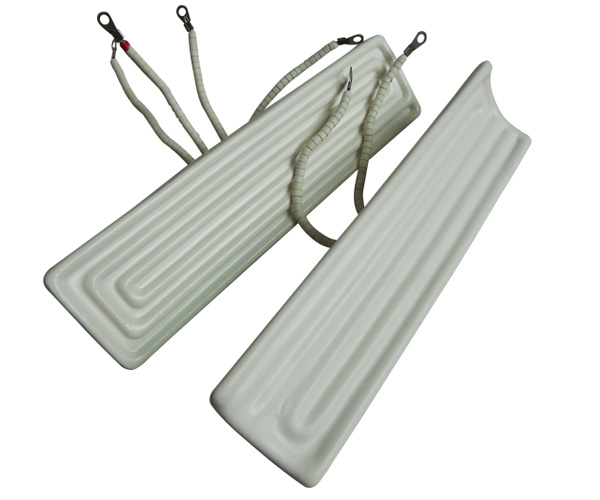
The ceramic heating pad isn’t just another heating element, it’s engineered for precision. Designed to deliver uniform, high-temperature heat in industrial and laboratory environments, this heating solution is trusted for its efficiency and stability under extreme conditions. Let’s break down what makes the ceramic heating pad essential across several industries. What is a Ceramic Pad Heating Element? A ceramic heating pad is a flexible, high-temperature heating element made from interlocking ceramic beads. These beads surround resistance wires—typically made from nickel-chromium alloys that generate heat when electric current passes through. The entire structure is rugged, bendable, and capable of withstanding temperatures up to 2050°F (1120°C). This design makes it suitable for heating curved surfaces, cylindrical components, and hard-to-reach areas. How It Works At the core of a ceramic heating pad is resistive heating. When power flows through the wire, the resistance converts electrical energy into thermal energy. The ceramic beads conduct this heat and provide insulation, ensuring efficient and uniform distribution. This mechanism makes it ideal for applications like: Preheating metal before welding Stress-relieving welded joints Post-weld heat treatment (PWHT) Drying pipelines or tanks Each pad can be tailored for different voltages, watt densities, and configurations based on the application. Key Benefits of Ceramic Heating Pads Here’s why engineers and technicians prefer ceramic heating pads over other industrial heating methods: Extreme heat tolerance: Withstand continuous heat up to 2050°F (1120°C) Uniform heat distribution: Prevents thermal stress and uneven expansion Flexibility: Easily conforms to complex or curved surfaces Durability: Designed for repeated industrial use in harsh environments Portability: Can be wrapped, clamped, or positioned as needed Modular design: Scalable for larger applications by combining multiple pads Applications Across Industries The demand for ceramic heating pad technology spans across sectors that require consistent and controllable heat: 1. Welding and Fabrication Preheating steel reduces the risk of cracking during welding Post-weld heat treatment (PWHT) reduces internal stresses Ideal for pipelines, pressure vessels, and structural steel 2. Petrochemical and Oil & Gas Pipe drying and tank heating during maintenance Ensures the right temperature for coatings and curing 3. Aerospace and Defense Heat treatment of aircraft components and critical joints Reduces the risk of material fatigue 4. Power Generation Used in turbine maintenance, boiler repairs, and pressure vessels Supports strict temperature requirements during stress relief 5. Shipbuilding and Marine Effective for heating hulls and piping systems Suitable for corrosive or moisture-heavy environments Choosing the Right Ceramic Heating Pad Selecting the appropriate ceramic heating pad depends on several key factors: Target temperature: Make sure the pad’s rating meets or exceeds your application’s thermal requirement. Watt density: Higher watt density gives quicker heat-up time but can stress certain materials. Pad dimensions: Must match the geometry of the surface for consistent heating. Voltage requirement: Pads are often custom-designed for 120V, 240V, or 480V systems. Control system compatibility: Use with a programmable controller for precision heating. If these parameters are misaligned, the heating result will be uneven, and the material might not reach optimal treatment levels. Advancements in 2024 Technology Modern ceramic heating pads have evolved significantly in the past year. The latest versions include: Digital temperature control integration Improved insulation for higher energy efficiency Modular pads with quick-connect fittings These enhancements minimize downtime and improve worker safety by eliminating the need for direct contact during temperature adjustments. Maintenance and Safety Tips To keep your ceramic heating pad functioning reliably: Inspect before each use: Check for broken ceramic beads or frayed wires. Store properly: Avoid kinks or tangling to preserve the resistance wire. Use approved controllers: Prevent overheating or electrical issues. Follow the correct temperature ramp-up procedures: Avoid thermal shock. Final Thoughts The ceramic heating pad is a powerful and reliable heating solution, built to perform under demanding conditions. Its ability to deliver uniform, high-temperature heat while adapting to complex surfaces makes it a cornerstone in industries that depend on precision and control. For engineers, fabricators, and industrial maintenance professionals, understanding how and when to apply this heating method is critical to project success.
How to Sell Flat Ceramic Band Heaters Online
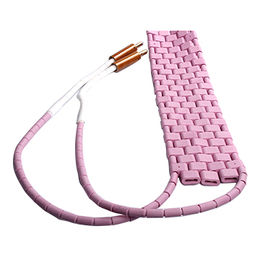
Industrial buyers are actively seeking heating solutions that deliver durability, energy efficiency, and precision. Flat ceramic band heaters meet these requirements, making them a sought-after product in sectors like plastics, packaging, pharmaceuticals, and food processing. For sellers, this presents a significant opportunity to tap into a growing market. Understand the Market Dynamics The global ceramic band heater market is projected to expand from USD 1.5 billion in 2024 to USD 2.3 billion by 2033, growing at a CAGR of 5.2%. This growth is driven by the increasing demand for energy-efficient and high-performance heating solutions across various industries. Highlight Key Product Features When marketing flat ceramic band heaters, emphasize the following features: High-Temperature Capability: Operate efficiently at temperatures up to 1200°F, suitable for high-intensity applications . Energy Efficiency: Advanced ceramic insulation minimizes energy loss, reducing operational costs. Durability: Constructed with premium-grade ceramics and metals to withstand extreme operating conditions. Custom Sizing: Tailored options allow seamless integration into existing machinery. Versatility: Applicable across industries such as plastics, packaging, pharmaceuticals, and food processing. Optimize Your Online Presence To effectively sell flat ceramic band heaters online, consider the following strategies: 1. SEO Optimization Keyword Integration: Incorporate relevant keywords like “flat ceramic band heaters,” “industrial heating solutions,” and “energy-efficient band heaters” throughout your website content. Meta Descriptions and Titles: Craft compelling meta descriptions and titles that include target keywords to improve search engine visibility. 2. High-Quality Visuals Product Images: Provide clear, high-resolution images showcasing the heaters from multiple angles. Application Photos: Include images demonstrating the heaters in real-world industrial settings to illustrate their practicality. 3. Detailed Product Descriptions Technical Specifications: List detailed specifications, including dimensions, voltage, wattage, and temperature range. Usage Scenarios: Describe specific applications and industries where the heaters are most effective. 4. Customer Testimonials and Case Studies Testimonials: Feature reviews from satisfied customers to build trust and credibility. Case Studies: Present detailed accounts of how your heaters have improved efficiency or reduced costs for clients. Leverage Digital Marketing Channels Expand your reach and attract potential buyers through various digital marketing avenues: Email Marketing: Send newsletters highlighting new products, special offers, and industry insights. Social Media: Share informative content, product updates, and customer success stories on platforms like LinkedIn and Facebook. Pay-Per-Click Advertising: Invest in targeted ads to appear in search results for relevant queries. Offer Exceptional Customer Support Providing excellent customer service can set you apart from competitors: Responsive Communication: Ensure prompt responses to inquiries and provide detailed information as needed. Technical Assistance: Offer guidance on product selection, installation, and maintenance. After-Sales Support: Maintain ongoing communication to address any post-purchase concerns or needs. Final Thoughts Selling flat ceramic band heaters online requires a strategic approach that combines product knowledge, effective marketing, and exceptional customer service. By understanding market trends, highlighting key product features, optimizing your online presence, leveraging digital marketing channels, and offering outstanding support, you can successfully reach and retain industrial buyers seeking reliable heating solutions.
How to Evaluate The Best Electric Drum Heater
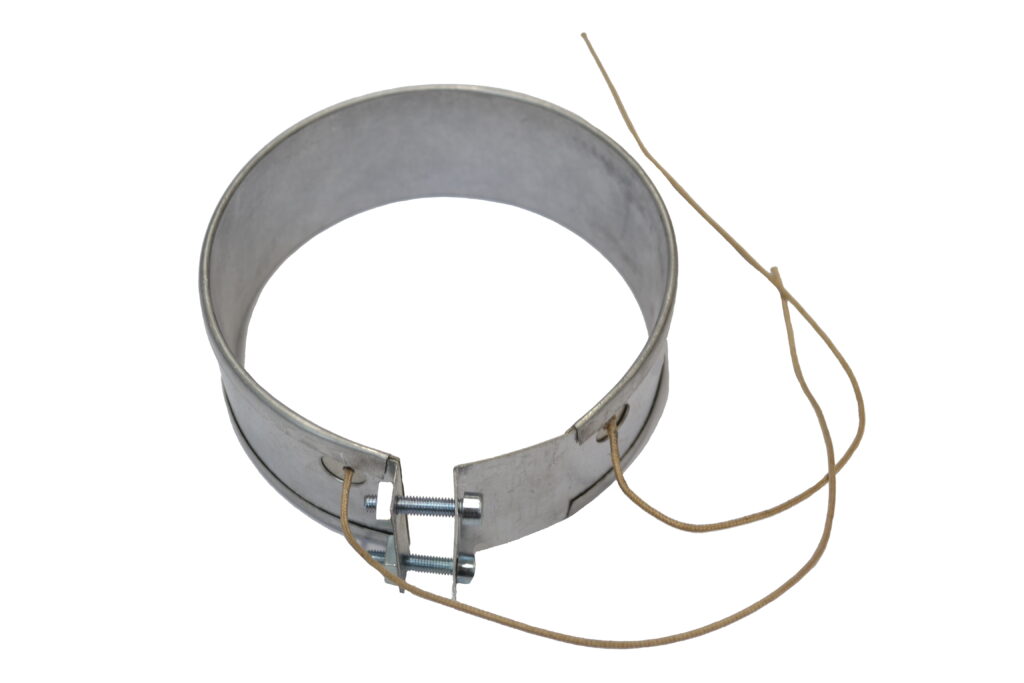
Choosing the best electric drum heater isn’t just about price or brand recognition. It’s about performance, safety, energy efficiency, and the ability to maintain consistent temperatures for specific materials. Whether you’re handling industrial chemicals, food-grade materials, or oils, the wrong heater can lead to waste, downtime, or safety hazards. That’s why evaluating the right model requires careful attention to several technical and practical factors. Identify Drum Material Compatibility Not every electric drum heater is suitable for every drum type. Most drums are made of either plastic or metal, and the heater must match the thermal tolerance and conductivity of the drum material. For metal drums, silicone band heaters or full-coverage jackets are ideal due to metal’s high thermal conductivity. For plastic drums, use heaters with lower surface temperatures to prevent deformation or damage. Always check the heater’s compatibility label or technical datasheet. Analyze Heating Method Efficiency The heating method impacts both energy usage and temperature uniformity. The common types include: Band heaters: Wrap around the drum and provide direct contact heating. Best for localized heat. Insulated drum jackets: Offer even heat distribution and reduce energy loss. Drum base heaters: Heat from below and are useful for high-viscosity materials that settle. Look for models that combine insulation with thermostatic control to prevent overheating and reduce energy consumption. Temperature Control Precision Temperature control is critical for sensitive contents. Poor regulation can cause scorching, spoilage, or chemical breakdown. Prioritize heaters with: Digital thermostats: Offer precise temperature readings and programmable settings. Built-in sensors: Automatically adjust heat to maintain stability. Overheat protection: Prevents temperature spikes that could damage contents or drums. Evaluate Watt Density Watt density refers to the amount of power per square inch of heating surface. A lower watt density provides gentler, safer heating for delicate materials. A higher density delivers faster heating but may require better control mechanisms. Low watt density (≤10 W/in²): Suitable for flammable or temperature-sensitive contents. Medium to high watt density (10–30 W/in²): Effective for thicker oils or industrial greases. Safety Certifications and Compliance An effective electric drum heater must meet industry safety standards. Look for: UL, CSA, or CE certification: Confirms electrical safety. NEMA-rated enclosures: Protects from dust, water, or chemicals. Explosion-proof models: Required in hazardous material environments. Energy Consumption and Insulation A poorly insulated drum heater will waste energy and take longer to reach the target temperature. Focus on models that: Include thermal blankets or full jackets. Use closed-cell foam insulation to retain heat. Have automatic shutoff features when optimal heat is reached. Installation and Portability Some heaters require complex mounting or permanent installation, while others are designed for fast setup. Flexible silicone heaters are lightweight and easy to wrap. Rigid metal base heaters may need permanent placement but offer consistent bottom-up heating. Compatibility with Drum Sizes Check if the electric drum heater supports your drum’s volume: 55-gallon models are most common, but smaller (15–30 gallon) and larger (85+ gallon) options exist. Adjustable straps or tensioners help fit different sizes securely. Always match the heater’s rated capacity with your drum’s exact volume. Maintenance Requirements Maintenance affects long-term reliability. Select models that: Allow easy access to thermostats and wiring. Come with replaceable heating elements. Include LED indicators for error alerts or power status. Total Cost of Ownership Don’t focus solely on upfront cost. Assess: Energy efficiency Durability under continuous operation Warranty coverage Availability of replacement parts Final Thoughts When choosing the best electric drum heater, align your decision with material type, safety, temperature needs, and energy usage. Each feature should serve a specific function tied to your process. This technical approach ensures safety, efficiency, and long-term value without costly mistakes.
Top 5 Industries That Use Stainless Steel Strip Heater with Thermostat
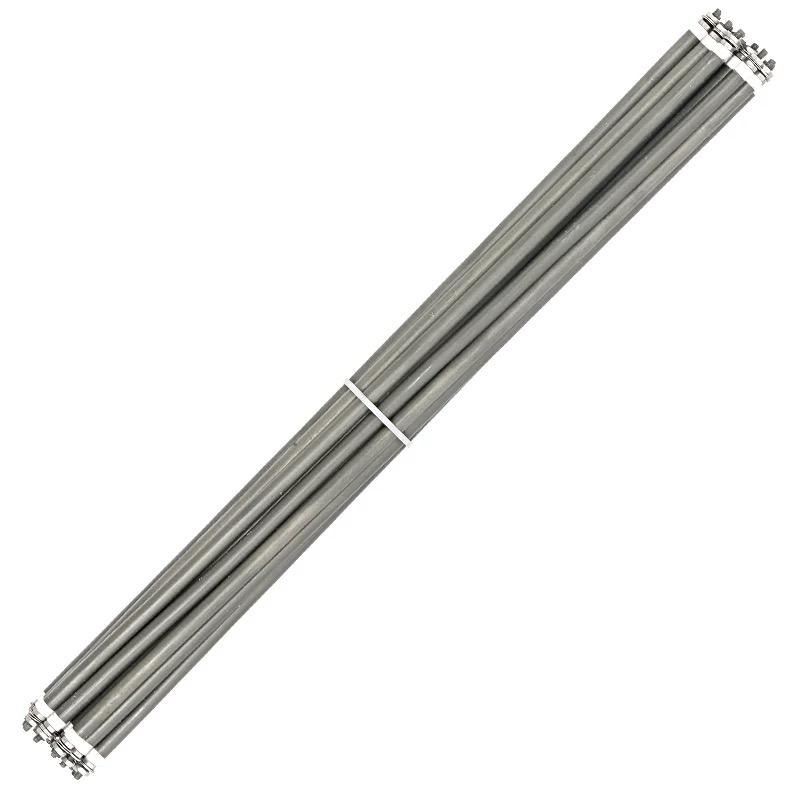
Precision heating is critical in several industrial applications. The stainless steel strip heater with thermostat is a top solution for delivering uniform, controlled heat in compact spaces. Designed for rugged environments, it provides reliability, efficiency, and temperature accuracy. With thermostatic control, it ensures minimal energy waste while maintaining consistent heat. Below are five industries where this heater is essential to operations. 1. Plastics Manufacturing Temperature consistency is vital in plastic forming, bending, and extrusion. A stainless steel strip heater with thermostat ensures the heat remains within tight parameters to avoid material deformation or defects. Why it matters: Maintains mold temperature for consistent product quality Prevents overheating during plastic sheet bending Reduces scrap rates in thermoforming processes Ideal for platen and die heating in extrusion setups Thermostatic control reduces downtime from overheating and equipment failure. With high thermal conductivity, stainless steel allows faster heat-up times. 2. Food Processing The food industry demands strict compliance with hygiene and safety standards. Stainless steel’s corrosion resistance and sanitary surface make it ideal. A stainless steel strip heater with thermostat offers precise heating for cooking surfaces, sealing systems, and food warming equipment. Key uses: Heat sealing machines in packaging lines Holding tanks for sauces and oils Warming trays and food holding equipment Conveyor belt warming to prevent food sticking Stainless steel construction meets FDA and USDA regulations, and thermostatic controls help maintain food-safe temperatures without manual adjustment. 3. Pharmaceutical Manufacturing In pharmaceutical production, heating requirements must align with GMP standards. Cleanroom environments depend on durable equipment that withstands sanitization while maintaining thermal performance. Applications include: Heating jacketed vessels Maintaining water bath temperatures Sterilization equipment heating Laboratory drying ovens Stainless steel strip heaters with thermostat deliver uniform thermal regulation for sensitive ingredients and lab processes. Their corrosion resistance makes them suitable for aggressive cleaning agents. 4. Semiconductor Fabrication Microelectronic manufacturing needs pinpoint thermal control to protect wafer quality. A stainless steel strip heater with thermostat prevents overheating and material damage during processes like wafer bonding, chemical vapor deposition, and photoresist baking. Key advantages: Stable, controlled temperature distribution Thin profile allows placement in tight chambers Thermostatic control prevents thermal overshoot Withstands high-purity environments Its compact design supports integration into equipment where space and temperature precision are non-negotiable. 5. HVAC and Ducting Systems HVAC systems rely on strip heaters to regulate airflow temperature and prevent condensation. A stainless steel strip heater with thermostat offers dependable heating for ducts, vents, and air handlers in residential, commercial, and industrial settings. Typical uses: Preheating air in makeup air units Freeze protection in ductwork Heating coils in fan-powered terminal units Electric duct heaters in ventilation systems Thermostatic accuracy ensures optimal energy use while maintaining indoor climate stability. Stainless steel’s strength resists wear in high-velocity airflow. Final Takeaway Each of these five industries relies on the stainless steel strip heater with thermostat to meet strict performance and compliance standards. Its combination of temperature control, durability, and compact form makes it essential in operations where failure is not an option. From cleanroom environments to high-speed packaging lines, this heating solution supports production goals with reliability and efficiency.
How to Use Band Heater For Tanks
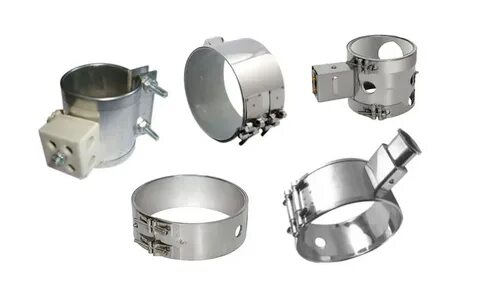
Precision heating is non-negotiable when handling temperature-sensitive liquids. A band heater manufacturer plays a critical role in this by supplying solutions tailored for industrial tanks. Band heaters apply consistent heat across the tank’s surface, ensuring product integrity without thermal gradients. But using one correctly requires more than just wrapping it around a vessel. Here’s how to use a band heater for tanks effectively, based on technical guidelines and real-world application data. Understand the Purpose of Band Heaters Band heaters are designed to: Maintain fluid viscosity in resins, oils, or chemicals Prevent freezing in cold environments Raise process temperature for reactivity or flow control Before choosing a heater, determine the tank material, volume, fluid type, and ambient temperature. Different materials like stainless steel or poly tanks conduct heat differently, which directly affects heater efficiency. Choose the Right Band Heater Type A reputable band heater manufacturer offers several models. Each type fits specific use cases: Mica insulated heaters – Ideal for low- to medium-temperature applications (up to 900°F). Cost-effective and commonly used. Ceramic band heaters – Better for high temperatures (up to 1200°F) and energy efficiency. They reduce heat loss via insulation. Mineral-insulated heaters – Provide the highest watt densities and fastest heat-up times. Measure Correctly Improper sizing is a common mistake. Measure the outside diameter of the tank accurately. Also, measure the height of the area to be heated. Band heaters come in custom sizes and are often manufactured per order. Install the Band Heater Securely Follow these steps: Wrap the heater tightly around the tank. Tighten the clamping mechanism (usually a strap or barrel nut) evenly to avoid air gaps. For ceramic types, preheat slightly before tightening if required. This prevents cracking. Check all electrical connections before energizing the heater. Apply Proper Thermal Insulation Most heat loss occurs through radiation and convection. Adding insulation over the heater: Increases efficiency Reduces power consumption Protects personnel from burns Use high-temperature blankets or fiberglass wraps approved for the heater’s rated temperature. Control the Temperature Accurately Don’t rely on guesswork. Install a thermocouple or RTD sensor near the heating zone. Connect it to a PID temperature controller to automate and regulate heat delivery. Smart controllers can also log data and detect system faults. Safety Precautions Matter Working with electrical heaters requires discipline: Use ground-fault circuit interrupters (GFCI) Ensure proper grounding of the heater Install over-temperature protection systems Regularly inspect for wear or exposed wiring Maintenance Checklist A well-maintained heater performs longer and more efficiently: Inspect clamping tightness every 30–60 days Check electrical terminals for corrosion or looseness Clean debris from the heater and the surrounding insulation Replace worn components from the same band heater manufacturer for compatibility Common Mistakes to Avoid Using the wrong watt density for plastic tanks (risk of melting) Leaving air gaps under the band Skipping thermal control Running heaters dry (no product in the tank) Why Work With a Trusted Band Heater Manufacturer Every top band heater manufacturer, like Cheri Heater, offers: Engineering consultation Custom-fit designs Certified safety standards Long-term technical support This ensures that your heater matches your exact tank specs and process needs. Final Thoughts Using a band heater for tanks is not just about applying heat. It’s about precision, safety, and efficiency. Start by choosing the right heater type, size it properly, and pair it with a smart control system. Regular maintenance and working with a trusted band heater manufacturer are what separate reliable performance from premature failure.
How to Use a Flange Heater
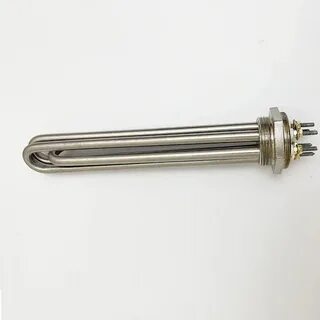
Precision matters when managing heat in industrial processes. Incorrect heating not only wastes energy but also risks damaging equipment. That’s where the flange tubular heater proves its worth. It’s engineered for reliability in high-demand environments such as tanks, reservoirs, and pressure vessels. But knowing how to use it properly is what ensures both safety and efficiency. A flange heater consists of tubular heating elements welded or brazed into a flange, then mounted into a pipe or tank. It’s built to heat liquids or gases directly. That makes it ideal for water, oil, solvents, and corrosive solutions. Here’s how to put it to work effectively. Select the Right Heater for Your Application Before anything else, match the heater with the right job. Flange heaters vary in voltage, watt density, flange size, and material construction. Choosing the wrong one leads to failure or worse, overheating or corrosion. Key factors to assess: Medium to be heated: Water requires different materials than oil or corrosive chemicals. Tank or pipe volume: Impacts wattage requirements. Desired temperature range Heating time expectations Material compatibility: Stainless steel for corrosive fluids; Incoloy for high temperatures. Check compatibility charts from ASME or your supplier’s datasheet to ensure proper selection. Installation Must Be Precise Improper installation shortens lifespan or causes accidents. Always follow the manufacturer’s technical drawings and wiring diagrams. But certain best practices apply universally. Steps to install a flange tubular heater correctly: Verify power is off before starting any installation. Inspect the flange face for damage or warping. Use appropriate gaskets (e.g., spiral wound or graphite) based on fluid and temperature. Tighten bolts using a star pattern to ensure even pressure distribution. Apply torque per ASME standards to prevent leaks. Confirm grounding for safety and regulation compliance. Avoid using Teflon tape or sealants on the flange face; this leads to leaks or joint failure. Wire It According to Load and Power Specs Wiring must match the heater’s voltage and amperage rating. Overloading the circuit can result in failure or a fire hazard. Best practices for wiring: Use copper wires rated for the load current. Install a control panel with temperature sensors and safety cutoffs. Include a contactor and thermostat to regulate performance. Test connections with a multimeter before powering on. For high-wattage units, a dedicated breaker is often required. Refer to the National Electric Code (NEC) or consult a licensed electrician. Temperature Control Enhances Efficiency Without proper control, overheating or underheating can lead to poor results or equipment damage. Flange heaters work best when paired with advanced controls. Components that improve control: Thermocouples or RTDs for precise sensing Digital PID controllers for maintaining setpoints High-limit sensors to shut down the heater if temperatures exceed thresholds Use proportional-integral-derivative (PID) logic for tight control over fluctuating loads. This not only protects the fluid and tank but also prolongs the heater’s life. Perform Routine Maintenance Even durable heaters need attention. Build-up of scale, sediment, or corrosion reduces heating efficiency and can cause early burnout. Maintenance checklist: Inspect terminals for oxidation or loose wires every 3-6 months. Check for leaks or flange warping Flush tanks periodically to remove sediment. Test temperature sensors for accuracy. Clean elements with compatible solvents if scaling appears. Keep a maintenance log. This helps track heater performance and predict when replacement or deep cleaning is needed. Final Thoughts The flange tubular heater is a workhorse in industrial settings. But its performance depends entirely on how it’s selected, installed, and maintained. By following proven steps and using the right controls, you ensure that your system runs safely, efficiently, and for years to come.
How Much Electricity Does a Tubular Heater Needs

Tubular heaters are popular for applications where compact and efficient heating is needed. They’re used in greenhouses, bathrooms, workshops, and even industrial cabinets. But a common question remains: how much electricity does a tubular heater need? Knowing the answer helps control energy consumption and reduce utility costs. Wattage Ratings and Typical Use Cases Tubular heaters are manufactured in a wide range of wattages. The power requirement varies depending on the length, diameter, and material of the heater. The most common domestic tubular heaters are rated: 60W to 240W for single-room or localized applications 300W to 500W for continuous heating in small spaces Industrial units often exceed 1000W, sometimes reaching 3000W or more. Calculating Electricity Usage Electricity usage is typically calculated in kilowatt-hours (kWh), the standard billing unit used by utility companies. To calculate how much electricity a tubular heater needs, use this formula: Energy Consumption (kWh) = Power (W) x Time (Hours) / 1000 Let’s say you’re using a 250W heater for 10 hours: 250 x 10 = 2,500 watt-hours 2,500 / 1000 = 2.5 kWh If your electricity rate is $0.15 per kWh, that’s $0.375 per day in energy cost. Monthly Estimate Example A 250W heater running 10 hours daily for 30 days: 2.5 kWh/day x 30 = 75 kWh/month 75 x $0.15 = $11.25/month Power vs. Heat Output Efficiency Tubular heaters are nearly 100% efficient in converting electrical energy to heat. That means almost all the electricity drawn is used for warming the space. However, the effectiveness of that heat depends on: Room insulation quality Thermostat usage Heat loss through walls/windows External temperatures Thermostats Save Energy One of the most effective ways to reduce electricity usage is by using a thermostat. It allows the heater to cycle on and off instead of running continuously. For example: A thermostat that maintains 20°C may reduce runtime by 30%-50%. This means a 250W heater could operate for just 5-7 hours instead of 10, reducing costs significantly. Influencing Factors on Power Consumption Several elements affect how much power your heater consumes: Ambient Temperature: Colder environments require longer operation times. Heater Length & Surface Area: Longer tubes cover more area but also draw more power. Material Composition: Aluminum sheaths heat faster than stainless steel, affecting efficiency. Control Systems: Timers and thermostats help manage operation intelligently. Energy Saving Tips Install Timers: Turn the heater off automatically during non-peak hours. Improve Insulation: Seal gaps and add weather stripping to retain heat. Use Reflective Panels: Place them behind the heater to direct heat into the room. Routine Maintenance: Clean dust and debris from the heater to maintain efficiency. Industrial Applications and Power Needs In manufacturing and commercial sectors, tubular heaters are used for pipe heating, fluid warming, and freeze protection. Power needs scale dramatically: 5kW to 15kW systems are not uncommon. These systems often include multi-zone controls to reduce total power use. For example, a 6kW system operating 8 hours a day uses: 6 x 8 = 48 kWh/day At $0.15 per kWh, that’s $7.20/day, or over $200/month Cost vs. Utility Although the cost may seem high, tubular heaters are often preferred for their reliability and compact design. They’re used in places where radiant or convection heating isn’t practical. Their minimal maintenance and ability to deliver targeted heat make them cost-efficient long-term. Safety and Compliance Ensure heaters comply with international standards like CE and UL. Safety features such as: Overheat protection Thermal cut-off switches Enclosure ratings (IP65, etc.) …all contribute to safe operation and indirectly reduce wasteful power consumption. Final Takeaway The electricity required by a tubular heater depends on its wattage, usage pattern, and control features. Small domestic units typically use 1–2.5 kWh/day, while larger industrial systems can use 50 kWh/day or more. By applying intelligent controls and using efficient designs, users can balance performance with energy savings.
What is a Ceramic Furnace
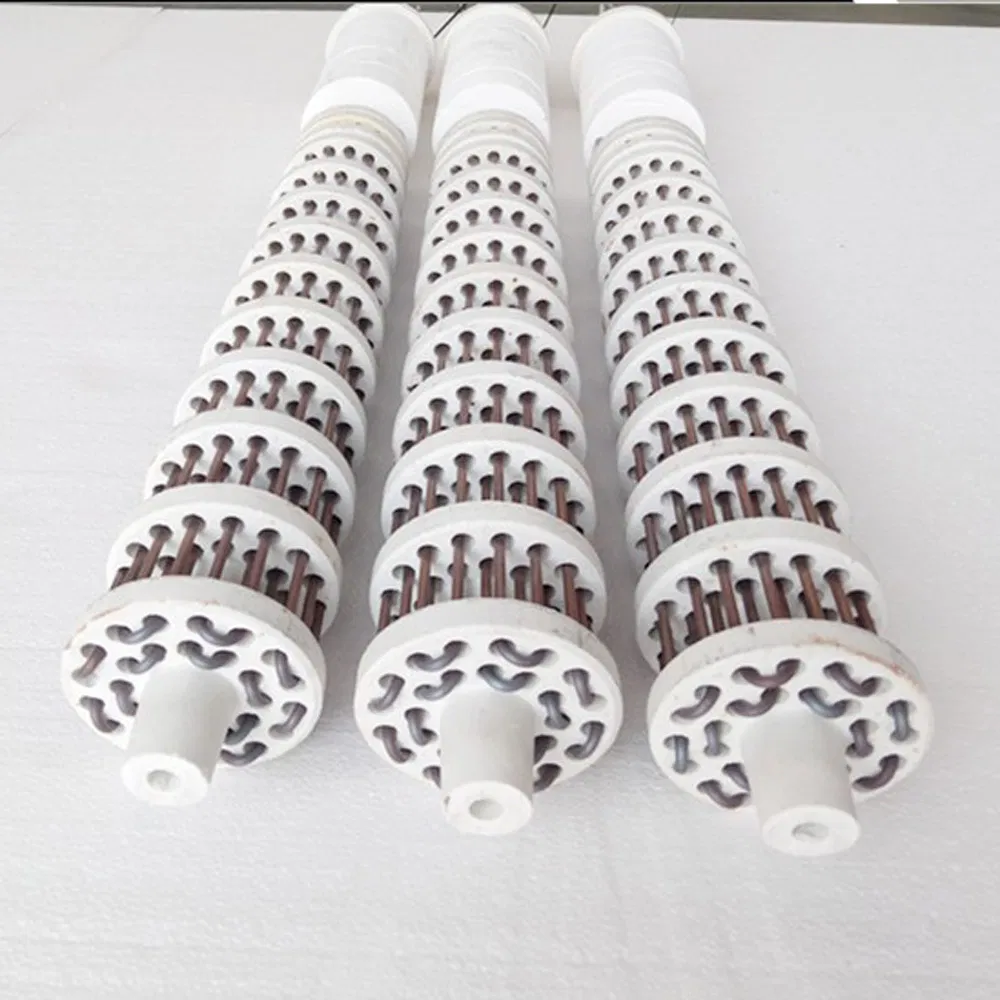
Precision manufacturing, electronics, and advanced materials all depend on controlled high-temperature processes. At the core of many of these processes is a ceramic furnace. But this isn’t just another heat chamber. It’s a critical technology that allows materials to be treated, altered, and perfected with exceptional accuracy. A ceramic furnace heater is a high-temperature heating system specifically designed to process materials using ceramic insulation or ceramic components within its structure. These furnaces are often used for sintering, heat treatment, material testing, and calcination in industries like metallurgy, electronics, and advanced ceramics. The defining characteristic of a ceramic furnace is its ability to maintain uniform, stable temperatures up to 1800°C (3272°F), depending on the model. This stability is crucial for processes like ceramic sintering, where consistent heat is necessary to bond particles without melting them. There are two primary configurations: Chamber Furnaces: Fully enclosed systems with ceramic fiber insulation lining the heating chamber. Used for batch processing. Tube Furnaces: Cylindrical chambers with ceramic tubes. Ideal for controlled atmosphere reactions and small-scale research. Why Ceramic Furnaces Matter Traditional metal-based furnaces can’t handle certain conditions without deforming or contaminating the materials being processed. Ceramic furnaces, however, are chemically stable and thermally resistant. That makes them essential for: High-purity environments: No risk of contamination from metal parts. Extreme temperatures: Ceramics withstand more heat than metal. Energy efficiency: Modern ceramic insulation reduces heat loss. Ceramic insulation materials, such as alumina (Al₂O₃), zirconia (ZrO₂), or mullite, are engineered to trap heat and reflect thermal energy back into the chamber. These materials exhibit: Low thermal conductivity High refractoriness Excellent dimensional stability Key Applications Ceramic furnaces aren’t just for research labs. They play a central role in many industrial workflows: Ceramic and glass sintering: Powders are consolidated into dense, durable parts. Powder metallurgy: Metal powders are heat-treated to form strong components. Semiconductor processing: Used for diffusion and oxidation in chip fabrication. Material testing: Simulates extreme environments for aerospace and automotive parts. Atmosphere Control Options In some cases, materials must be treated in inert or reducing atmospheres to prevent oxidation. Tube-type ceramic furnaces are often paired with gas flow systems that allow precise atmosphere regulation. Common gases used include: Argon Nitrogen Hydrogen This capability is critical for synthesizing advanced materials like battery cathodes, fuel cells, and nanomaterials, where air exposure could ruin results. Choosing the Right Ceramic Furnace When selecting a ceramic furnace, several factors should be evaluated: Maximum temperature: Match the furnace to your process requirements. Heating elements: MoSi₂ and SiC are the most common. MoSi₂ can handle higher temperatures but is more brittle. Chamber size: Depends on whether you’re doing research or industrial-scale production. Atmosphere compatibility: Not all ceramic furnaces support gas environments. Final Thoughts Ceramic furnaces offer unmatched precision and thermal control for industries that demand high-performance heat treatment. For engineers, researchers, and manufacturers, understanding the capabilities and limitations of ceramic furnaces isn’t optional. It’s essential for pushing material performance to new levels. If you’re investing in quality, consistency, and advanced material processing, then knowing how a ceramic furnace works and choosing the right one can directly impact the success of your operation.










